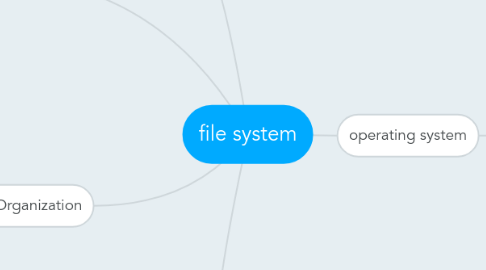
1. What are filesystems?
1.1. A filesystem is the methods and data structures that an operating system uses to keep track of files on a disk or partition; that is, the way the files are organized on the disk.
2. A Hard Disk Or Drive
2.1. Physically organized into tracks and sectors
2.2. Read/write heads move over specified areas of the hard disks to store (write) or retrieve (read) data
2.3. Random access device
3. File Organization
3.1. Binary or text
3.1.1. Computer readable but not human readable
3.1.2. Text files consist of ASCII or Unicode characters
3.2. Sequential or random access
4. Function
4.1. Creating, manipulating, renaming, copying, and removing files to and from a storage device
4.2. Organizes files into common storage units called directories
4.3. Keeps track of where files and directories are located
5. operating system
5.1. Types of operation system
5.1.1. Single- and multi-tasking
5.1.2. Single- and multi-user
5.1.3. Distributed
5.1.4. Distributed
5.1.5. Templated
5.1.6. Embedded
5.1.7. Real-time
5.1.8. Library
5.2. Components
5.2.1. Kernel: Provide the most basic level to control over all computer's hardware
5.2.2. Program execution: An application program can interact with the hardware only by obeying rules and procedures programmed into the operating system.
5.2.3. Interrupts: Provide an efficient way for the operating system to interact with and react to its environment
5.2.4. Modes: 2 modes are protected mode and supervisor mode
5.2.5. Memory management: This ensures that a program does not interfere with memory already in use by another program
5.2.6. Virtual memory: Allowing the operating system to use the same memory locations for multiple tasks
5.2.7. Multitasking: Giving the appearance that it is performing the tasks at the same time
5.2.8. Security: A computer being secure depends on a number of technologies working properly
5.3. Examples of operation systems
5.3.1. Unix and Unix-like operation system
5.3.2. BSD (Berkeley Software Distrubution)
5.3.3. OS X
5.3.4. Linux
5.3.5. Microsoft Windows

